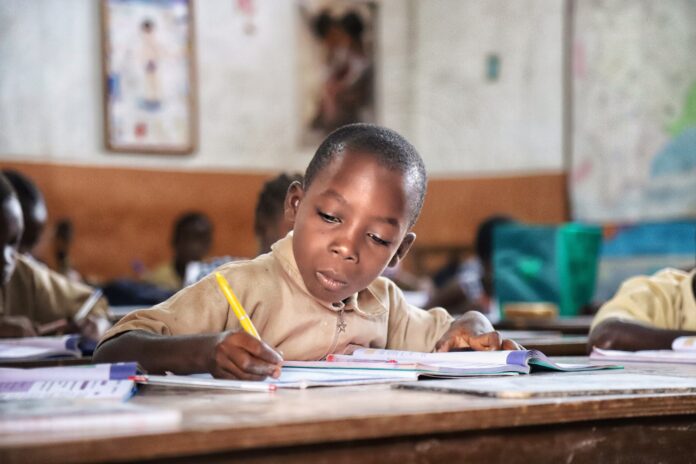
By
It doesn’t take long for a kid growing up in Florida to become familiar with hurricanes, or for someone raised in Louisiana’s Cancer Alley to become acquainted with what breathing oil-refinery pollution can do to you. In places where the causes and effects of climate change are most acute, it’s all part of the fabric of daily life.
Except, however, at school.
Whether or not kids learn that, say, hurricanes are getting both larger and more frequent because of human-caused climate change is wholly dependent on where they live and what school they go to — and if it happens to be a public school in Florida, where the state climate curriculum earned a “D” from the National Center for Climate Education, they probably won’t be learning much about what’s supercharging those all-too-familiar storms.
“The corporate textbooks that the kids get largely ignore the crisis. They either fail to educate the kids about the climate catastrophe, or they relegate it to the last pages of the book,” says Jesse Hagopian, who has taught in Seattle public schools for over 20 years, and also works for the Zinn Education Project.
It’s a problem that has somehow actually gotten worse, even as natural disaster after natural disaster makes it abundantly clear that climate change is a very current risk.
During the 2010s — a decade that saw the negotiation of the landmark Paris Agreement, which legally binds countries to drastically reduce their carbon emissions — the state of climate education in the United States decidedly did not improve.
The corporate textbooks that the kids get largely ignore the crisis.
JESSE HAGOPIAN
A study published in 2016 found that nearly a third of science teachers were telling students that climate change is “likely due to natural causes,” while roughly another third taught that the science was unsettled on what is causing climate change. At the college level, the number of sentences in science textbooks devoted to climate change actually declined.
The Next Generation Science Standards, a multi-state effort to standardize science curricula, were finalized in 2013 and have been adopted by 20 states and Washington, D.C., with other states developing their own standards. But NGSS recommends waiting to teach about human-caused climate change until the 5th grade.
Every kid who can stay inside because they can’t breathe the air can learn about climate change.
JESSE HAGOPIAN
In more recent years, there has been progress made in implementing new curricula and standards based on the very stark reality of climate science: that human actively, mainly in the form of carbon emissions caused by burning fossil fuels, is the primary cause of climate change, and without drastic reductions in emissions in the coming decades there will be catastrophic consequences to both the natural world and human societies.
In 2020, New Jersey passed a mandate that requires climate change to be taught across all subjects, not solely science, beginning in kindergarten. As Hagopian puts it, “Every kid who can stay inside because they can’t breathe the air can learn about climate change.”
But even when climate change is taught, it’s often narrowly discussed as just an issue about carbon dioxide in the atmosphere,” he says, “and not the human choices and politics that put it there.”
Tools like the Zinn Education Project’s new Climate Crisis Timeline aim to change that. Published September 8, the timeline takes a familiar format, but includes some eye-opening points (the first sugar-cane plantation worked by enslaved Africans was on the Portuguese colonial island of Madeira, and was started before Columbus sailed to the Americas), showing the very strong links between slavery, colonialism, racial capitalism, and climate change.
That kind of comprehensive approach to climate education should be the national standard — the climate crisis can and will affect all arenas of life, and so it is as applicable in the humanities as it is in a science classroom.
Unfortunately, climate education is currently getting caught up in the fervor of book banning happening in school districts across the country. Republican state lawmakers are also passing legislation that waters down curricula, like a new requirement in Ohio to teach “both sides” of the climate crisis in public university courses — when, of course, there is no other side.


